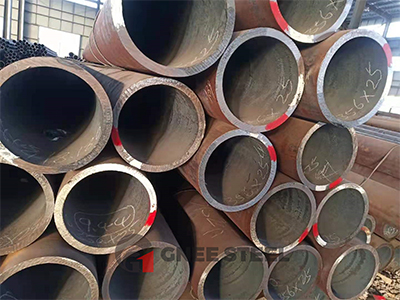
Privacy statement: Your privacy is very important to Us. Our company promises not to disclose your personal information to any external company with out your explicit permission.
Hot-rolled Seamless steel pipe: Hot rolling is relative to cold rolling. Cold rolling is rolling below the recrystallization temperature, while hot rolling is rolling above the recrystallization temperature.
After hot rolling, the non-metallic inclusions (mainly sulfides, oxides, and silicates) inside the steel are pressed into thin sheets, resulting in delamination (sandwiching). Delamination greatly deteriorates the tensile properties of the steel along the thickness direction and may cause interlaminar tearing as the weld shrinks. The local strain induced by weld shrinkage often reaches several times the yield point strain, which is much larger than the strain caused by load;
Residual stresses caused by uneven cooling. Residual stress is the internal self-balanced stress in the absence of external force. Hot-rolled steel sections of various sections have such residual stress. Generally, the larger the cross-section size of the section steel, the greater the residual stress. Although residual stress is self-balanced, it still has a certain impact on the performance of steel components under the action of external forces. For example, it may have adverse effects on deformation, stability, fatigue resistance, etc.
Hot-rolled steel products are difficult to control in terms of thickness and edge width. We are familiar with thermal expansion and contraction. Even if the length and thickness are up to standard after hot rolling at the beginning, there will still be a certain negative difference after cooling. The wider the side width and the thicker the thickness, the more obvious this negative difference will be. . Therefore, for large-sized steel, the side width, thickness, length, angle, and edge lines of the steel cannot be too precise.

LET'S GET IN TOUCH

Privacy statement: Your privacy is very important to Us. Our company promises not to disclose your personal information to any external company with out your explicit permission.

Fill in more information so that we can get in touch with you faster
Privacy statement: Your privacy is very important to Us. Our company promises not to disclose your personal information to any external company with out your explicit permission.